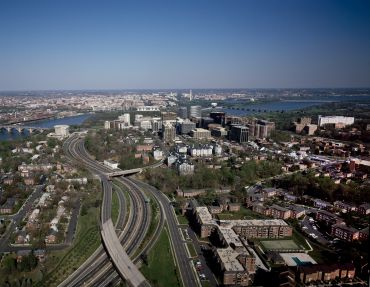 The Commercial Observer launches a new online feature: Ask an Expert About…
The Commercial Observer launches a new online feature: Ask an Expert About…
Every other week we will have a resident expert for a Q-and-A about an aspect of commercial real estate in New York City.
Top attorney Barry LePatner, an expert on construction law and costs, will be available to answer your questions on Thursday and Friday. Please submit any questions to either the Comments box below or email them to Commercial Observer editor Tom Acitelli at tacitelli@observer.com. They will be passed along to Mr. LePatner and answered in the order they are received.
Tune in Thursday and Friday for his answers.
Q: What’s holding up construction at Ground Zero? Does Silverstein build all three of his towers? Why or why not? – Thursday 9:10 a.m.
A: More than eight years after 9/11, Ground Zero remains a political and construction quagmire. Even those directly participating in the project — involving over 100 different contactors, 19 public agencies and two embattled developers — readily acknowledge they see no short-term conclusion in sight.
The Freedom Tower, taken back from Silverstein Properties by the Port Authority in 2006, is still being designed and is amazingly scheduled for completion in 2013. Other towers will not be started or completed until 2012-2016. The Memorial will not be finished until late in 2011.
The project is certain to expend public funds involving billions of dollars in cost overruns.
It is, in short, a political nightmare. When the final numbers are calculated, Ground Zero will sadly rank as a bigger boondoggle than Boston’s Big Dig.
The answer? Impose a moratorium on all Ground Zero work until the completion of final design drawings encompassing the transportation hub, the retail component and the Freedom Tower, not to mention the oft-neglected Performing Arts Center designed by Frank Gehry. Then, to bring this iconic site to a certain conclusion, require fixed-price contracts that ensure guaranteed completion dates, with contractors assuming all risks associated with cost overruns or delays.
Q: Given the construction layoffs recently in New York, do you think this will spur unions to relax pay and work demands? Unions are a big part of the higher costs of construction in New York, no? – Thursday 11:33 a.m.
A: Last May, the several building trade councils representing union members entered into an agreement designed to cut costs as much as 21 percent on large commercial projects. Real estate developers were not impressed.
Stephen Spinola, president of the Real Estate Board of New York, said, “It doesn’t go far enough.” He also said savings may be only between 3 percent and 8 percent, according to published reports.
The effort of contractors, who have lost over one million jobs nationwide during the downturn, is misguided. Contractors often bid at or below cost against each other for projects. After winning the contract with a “low bid,” they are effectively counting on making numerous change order claims during construction for “unanticipated” problems. The hope is to drive up the final construction cost to ensure a modest profit.
As we have seen from the construction projects under the U.S. government’s stimulus plan, bids that are awarded up to 28 percent below anticipated costs will lead to one of two results: either the contractors run out of money during the project and must abandon it; or they turn to the public or private owners and demand more money. The owner is then left to either fire the contractor and hire others to complete the work, or pay extortionate monies to see the project through to completion. A sorry prospect either way.
Owners who are contemplating new projects today must beware of low bids.
The answer is to secure true “fixed price contracts.” These ensure that construction does not begin until the design documents are complete and with a fixed construction budget. Just as important, they permit contractors a fair profit while agreeing to waive their right to make any future change orders during construction for “unanticipated” problems.
The primary goal is for the owner to secure construction cost certainty, an objective sorely missing from the overwhelming majority of projects.
Q: How can developers mitigate the costs of litigation at their sites to lower construction costs? What do they need to be doing ahead of time? – Thursday 2:21 p.m.
A: Most disputes during the construction process involve amounts less than $100,000. However, engaging in protracted litigation for disputes of this size is rarely cost effective. To alleviate this problem, our law firm has employed a one-day dispute resolution procedure. I strongly urge that, industry-wide, this procedure be part of all future contracts between the owner and the architects, any engineers and the construction team.
Essentially, it entails each party submitting its position paper to an arbiter (agreed to in advance and named in each contract), who agrees to meet for one day with both parties within 20 days from the date the dispute arises. A written decision is to be rendered within 48 hours, and is binding on all parties to the dispute. The results are threefold: It allows the project to move forward; limits the expended time and legal fees; and minimizes angry feelings that can build up if one party feels especially aggrieved for the length of the project over a perceived unfairness by the other.


